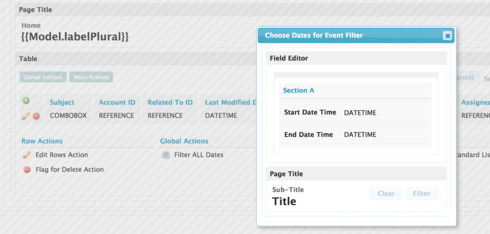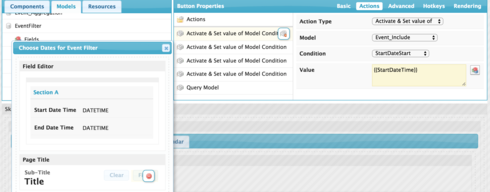Here’s my scenario:
I have an aggregate model with 4 conditions (cond1, cond2, cond3, cond4) based on date fields. I have a table based on that model with a date range picker specifying the existing conditions (cond1 and cond4). Is there anyway to take the value plugged into cond1 from the table filter to activate and set value of conditions 2 and 3? I know with manual filters you have the option to activate other conditions, but that doens’t seem to be a built in option for the date filter.
Here’s my current workaround that’s not quite working:
I have an action on my agg model with initiating event being model re-queried. The actions are to set value of model conditions 2 and 3 using {{$Model.OrderLineAgg.conditions.0.value}}. This is “working” correctly if the user clicks to apply the filter button twice. I’m assuming the issue is the model is not re-queried after that model actions so the table is not updated until the second requery from the filter. I tried to fix this by adding a third action to my model action to query that model, but that created an infinite loop of queries. Any suggestions or ideas? Is there an easier way via XML or another method that I’m missing?
Question
Affect other model conditions from a table date range filter
 +9
+9Enter your E-mail address. We'll send you an e-mail with instructions to reset your password.







